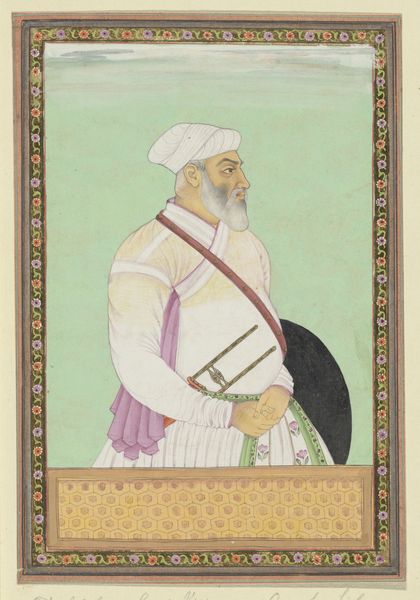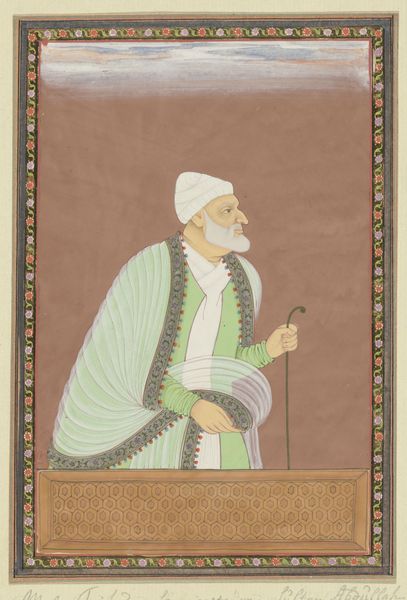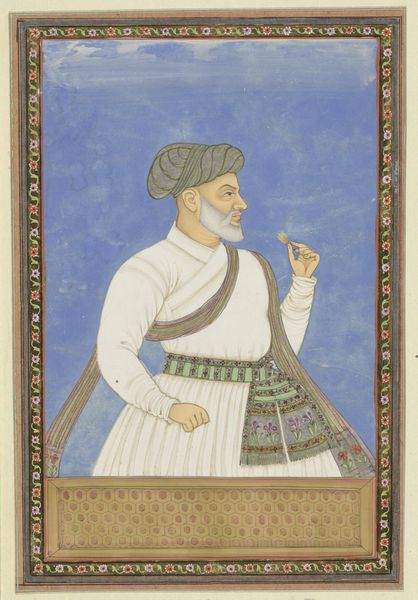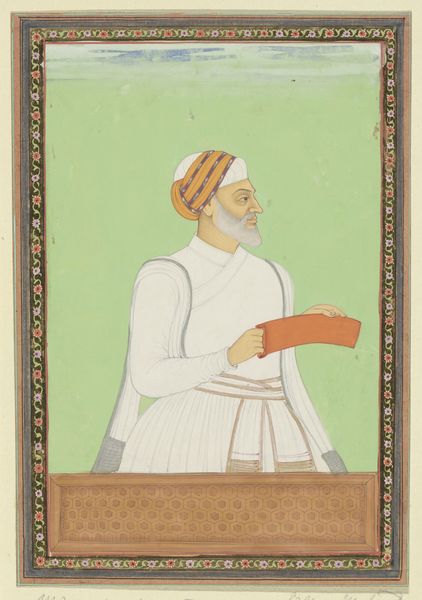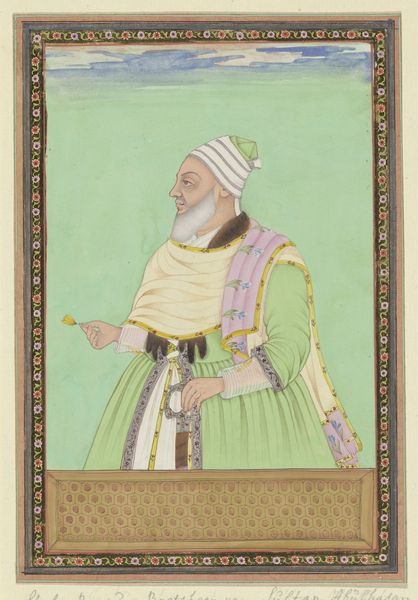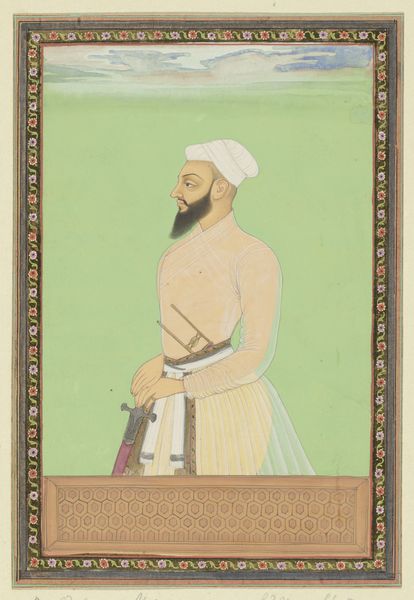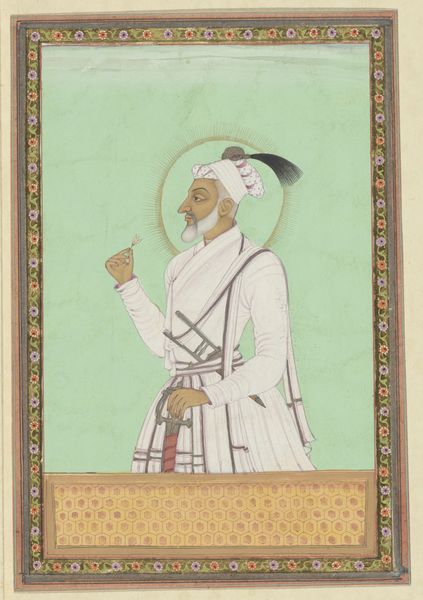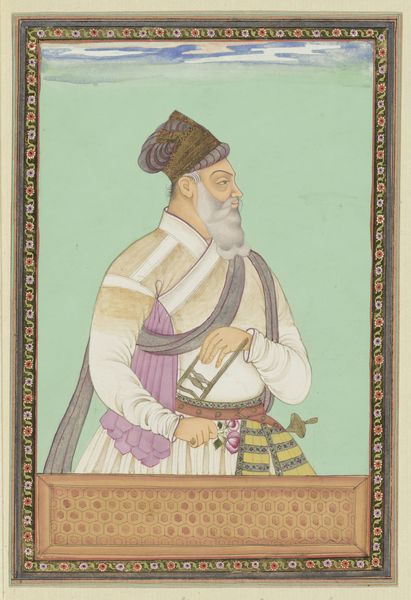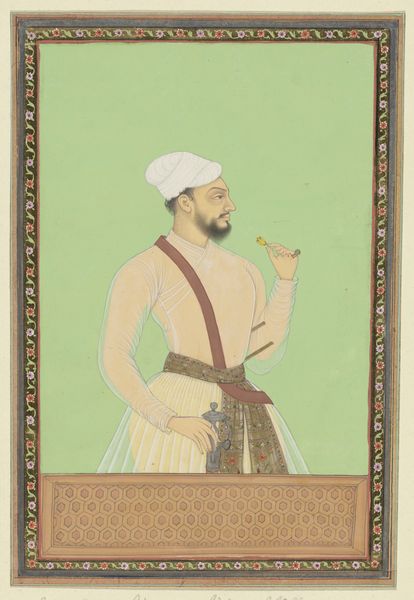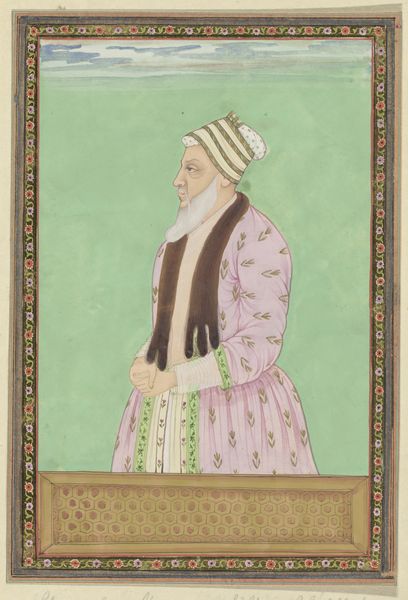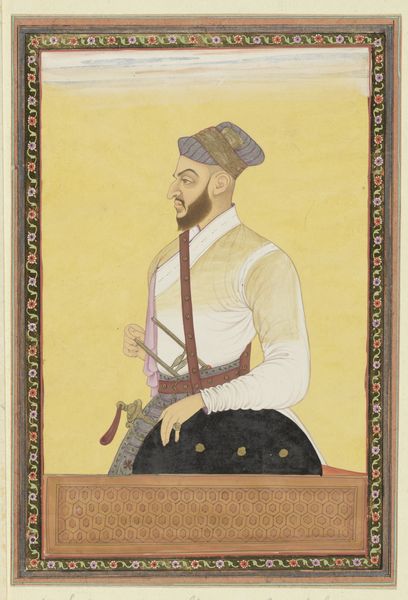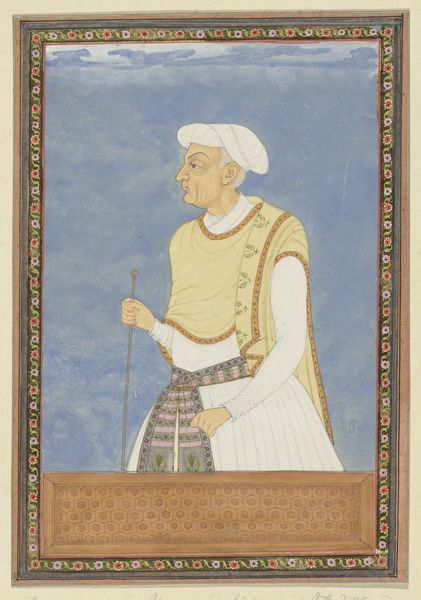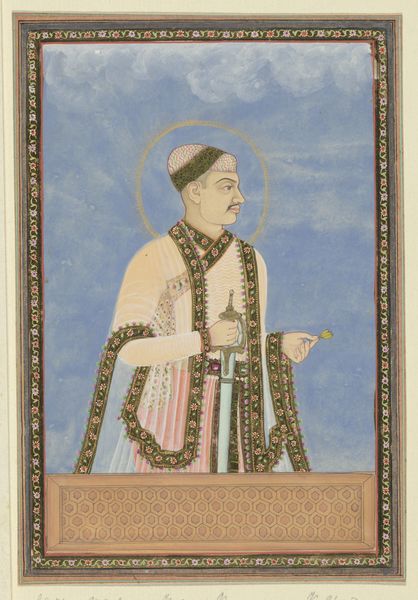
Portret van Muhammad Amin, die vestingcommandant (qal'adar) van Golconda is geweest, zowel in de tijd van Sultan Abdullah als in de tijd van Sultan Abul Hasan c. 1686
0:00
0:00
anonymous
Rijksmuseum
painting, watercolor
#
portrait
#
painting
#
watercolor
#
orientalism
#
islamic-art
#
watercolour illustration
#
miniature
Dimensions: height 203 mm, width 140 mm
Copyright: Rijks Museum: Open Domain
Curator: Here we have a striking watercolor from around 1686, "Portret van Muhammad Amin, die vestingcommandant (qal'adar) van Golconda is geweest, zowel in de tijd van Sultan Abdullah als in de tijd van Sultan Abul Hasan." It resides here at the Rijksmuseum. Editor: My initial impression is one of carefully composed simplicity. The artist uses a limited palette and precise lines to create a portrait that’s both formal and surprisingly intimate. It breathes austerity and strength, but the texture is subtle. Curator: Indeed. Let’s delve into the structure. Note the clear division of space, the figure centered against that serene blue backdrop. This symmetrical construction reinforces the subject’s dignity, the formal equilibrium reflecting a sense of power and control. Editor: I'm drawn to the materiality itself – the watercolor on paper. It speaks to a tradition of manuscript illumination, where meticulous detail and fine brushwork were paramount. Considering this portrait within the broader history of artisanal craft, the labour and skill invested into creating such refined textures demand acknowledgment. This piece likely circulated amongst an elite audience, acting as both status symbol and marker of cultural capital. Curator: I agree, though I am most affected by the composition—specifically, the balance achieved through the careful placement of the subject's white attire against the blue backdrop, counterpointed by the sword. This dichotomy generates a powerful tension—the potential for force tempered by evident restraint. The very idea of the Qal'adar embodies paradox: guardianship requiring threat. Editor: Exactly, the choice of materials supports this concept. Watercolour allows a certain ethereal quality but applied so precisely and controlled, that delicacy is deceptive. It emphasizes a cultural tension between perceived extravagance and strict function; it begs the question about the socio-economic function this piece held. Curator: Fascinating. It invites us to contemplate the intersection of personal identity and the burdens of leadership. The controlled hand implies constrained action, a considered stance for a figure embroiled in shifting political alliances. Editor: So, we start by focusing on the intrinsic aesthetic properties, and then, gradually unveil layers related to social narratives embedded within both production methods, historical context, and material culture. The piece exemplifies how artworks are never simply self-contained, but speak to power dynamics and values. Curator: Indeed, reflecting on both formal composure and historic burden brings another richness to it all, revealing multiple interpretive strands to better unravel the human condition in art.
Comments
No comments
Be the first to comment and join the conversation on the ultimate creative platform.
